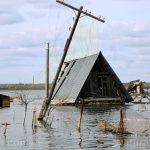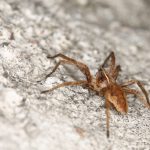
First-aid 101: How to identify and treat spider bites
Thursday, June 07, 2018 by Carol Anderson
http://www.preparedness.news/2018-06-07-first-aid-101-how-to-identify-and-treat-spider-bites.html

It’s really great that summer has come which means we get to enjoy the sun and hit the great outdoors. However, summertime is also the season for creepy spiders to come out and play. Thankfully, the common spider bites that we encounter are not dangerous, although they can still be painful, or worse, trigger other health problems.
This is why it’s crucial to have enough knowledge about different spiders and their bites. For starters, it’s important to be aware that in the southern and western areas of the U.S., black widow spiders are very common, although they can be seen throughout North America. Brown recluse spiders are pretty much common in any place, but they are mostly found in the midwestern and southwestern states.
In the Pacific Northwest, there are hobo spiders, while wolf spiders live in different habitats, but have a proclivity to prairies. Meanwhile, tarantulas can be found in hot and dry places like states in the southwest.
Spiders can easily be spotted inside our houses. Most times they can be seen under eaves or anywhere that’s dusty. According to Dr. Amy Kassouf from Ohio, spiders are attracted to water so they tend to find comfort in lakehouses. They also like making their webs in areas where there are many bugs to catch.
Spider bites
Usually, we mistake other insect bites for spider bites. However, wounds from spider bites would normally appear hours later, unlike those from mosquitoes or other bugs, where swelling immediately appears.
In case you notice a red swell on your skin, you’ll know it’s not a mosquito bite if it feels more painful than itchy. Their bites also tend to have a puncture area. As for venomous spiders, the bite will cause more pain and larger swelling. (Related: Scientists say most so-called spider bites are misdiagnosed.)
Other symptoms you can look out for when bitten by a spider are:
- Anxiety or restlessness
- Difficulty breathing
- Fever or chills
- Headache
- High blood pressure
- Muscle pain or cramping
- Nausea and vomiting
- Sweating
- Swollen lymph glands
If you think your bite was caused by a non-venomous spider, you can treat the wound at home by applying an ice pack on and off of it for 10 minutes at a time. It’s also very important not to expose your wound to dirt to prevent infection. It’s best to have a spider bite checked immediately by a healthcare professional, especially if you’re not sure which type bit you.
In terms of venomous spiders, you’ll immediately see two fang marks if a black widow bit you. Its bite is very painful and the sensation can reach your back and belly. You can also experience severe cramping in your abdominal muscles if you don’t get immediate medical attention.
Normal bites of a brown recluse are painless in the beginning but will start to itch and hurt after about eight hours. Victims may experience nausea and vomiting, fever and muscle pains. Furthermore, the venom of the brown recluse is necrotic, meaning it attacks surrounding tissue and destroys skin, fat, and blood vessels around the wound.
Aside from the above symptoms, another important thing to look out for when you’re bitten by a spider is possible allergic reactions. Too much swelling of the wound may have a bad effect on your airways.
Always be prepared for any emergency by checking out Preparedness.news today.
Sources included:
Tagged Under: Tags: black widow, brown recluse, emergency, first aid, insect bites, preparedness, remedies, severe pain, SHTF, spider bites, spider venom, spiders, swelling, tarantula, toxins, treatments, venomous





